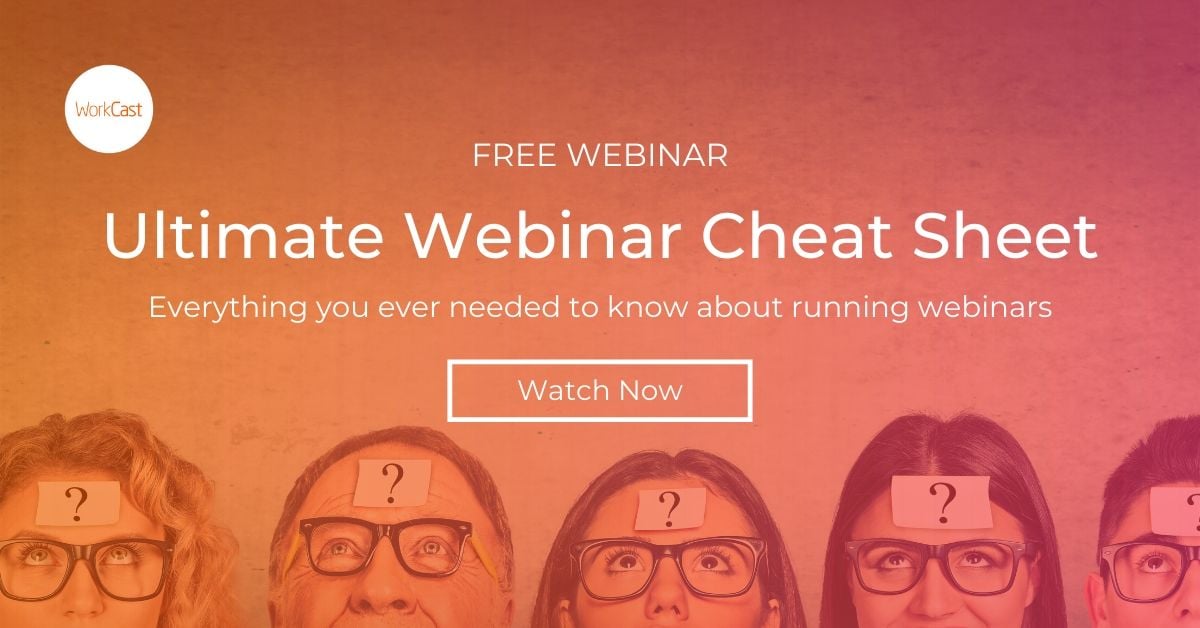Webinars are a great marketing and communications tool. They can help you generate leads, engage your audience, and grow your business.
But for those who aren’t familiar with them - and even those who are - webinars can be rather intimidating. How do you plan it? What about promoting it? How do you come up with the content?
All of these questions can be an impediment to businesses creating a comprehensive webinar programme - but they don’t have to be. We’ve put together some handy tips and tricks to help get you and your webinar programme off to a great start.
Preparation
The most important thing to remember about webinars is you get what you put in. What does that mean? Planning for a webinar properly will help ensure the process and end result are as effective as possible.
So, how do you start?
First, you should think about when you want to hold the event. What day of the week and what time would be best?
Hint: Avoid hosting live webinars on Mondays and Fridays. These tend to be the least well attended days.
If you’re feeling short for time, remember that simulive is a great option for any webinar. It gives you the feel of a live webinar with the confidence and predictability of a pre-record.
And depending on your webinar platform, you can combine a simulive webinar with a live Q&A, meaning you can interact with your audience. It’s a win-win.
Whether you pre-record or do it live, rehearsing is super important, it can help iron out any pre-event nerves, especially if your presenters are not the most tech savvy. Find some great tips for presenters here.
Promotion
Ok, so you’ve planned your webinar, now how do you get people to attend?
A comprehensive promotion strategy is critical in making your webinar a success. We’ve written extensively on this, but here are a few to get you started:
- Ensure you give yourself enough time to promote your webinar properly, ideally 4-5 weeks
- Space out your invite and follow-up emails (reminders, second invites etc.). Don't spam your audience as it could lead to the dreaded unsubscribe.
- Split the list into your preferred contacts and others (un-engaged contacts). Alternate the lists you target to prevent email exhaustion.
- Timing your emails is everything. We’ve found a lot of success with sending weekly invites to those who haven’t registered yet and then a final invite on the morning of. In fact, we have seen a 10% uplift in webinar registrants when sending a final invitee on the same day as the webinar.
- Email is not the only tool in your arsenal, every channel in the marketing mix should be used to promote your webinar.
- And don't forget to add referrer tags or tracking links to all of these so you know which channel is performing best.
Hint: On-the day reminders for registrants are also really helpful. Even when people add events to their calendars, they don’t always remember to attend!
Content
Another important part of the planning process and the overall webinar experience is the content. Without good and well prepared content, you won’t have much of a webinar programme.
Making content engaging involves some effort and planning but shouldn’t be all that hard. Don’t be afraid to think outside of the box - video is a great way to both engage and impress your audience.
Hint: You can embed your video into your presentation slides to make the experience seamless for both presenters and attendees.
Your video doesn’t have to be TV quality or professionally produced. If you don’t have access to these tools or don’t have the budget, webcam can be just as effective. Just make sure that you plan your content around utilizing webcam video; you don’t want it to seem out of place or just plunked in.
While a lot of your focus will be (rightly) on your slides, don’t forget about thinks like polls and surveys. These are a crucial part of your overall content as they will help you engage your audience, warming them up for your post-webinar communications strategy.
Using additional resources like PDFs, checklists and useful links can also help with pre and post event engagement. Sending people to a relevant blog or providing them with an eBook will extend their experience (and hopefully journey with you).
The most important thing to remember about content is to make it engaging. How would you want to learn about the topic you’re speaking about? What would make you want to attend? For more tips on how to create engaging content, download our eBook.
The Event
You’ve planned, promoted, created awesome content - now what?
Well, it’s time to run your webinar. This is where a lot of people get scared. What if no one attends? What if the presenters mess up?
Hopefully, your planning and rehearsal will prevent any of these things from happening, but don’t worry if they do. There is a lot you can learn from your actual events to make the next webinar better.
Hint: Consider creating a webinar programme or series rather than a one off. This will help you build an audience and make the most of your promotional efforts.
When you’re actually running the webinar, keep the audience in mind. Don’t’ just fling facts and words at them - answer questions throughout, deploy your polls in a timely manner, and have fun!
After the webinar, make sure you send out the on-demand recording to both attendees and registrants who couldn’t attend. This will keep them engaged and extend the life of your webinar content.
Your job’s not done yet though! Use your reporting and analytics to identify any areas for improvement. Did you see a drop-off 40 minutes in? Maybe your webinar was too long. Were there a lot of questions about one slide? Maybe you need to explain that topic a little bit better.
The great thing is, if you’re running a webinar programme, these stats can help you make sure your next webinar is better than your last.
Learn how to run incredible webinars with our Ultimate Webinar Handbook.
Share this
You May Also Like
These Related Stories

4 Ways to Engage Your Audience During Your Webinars

What Equipment You Need for a Webinar: Our List




